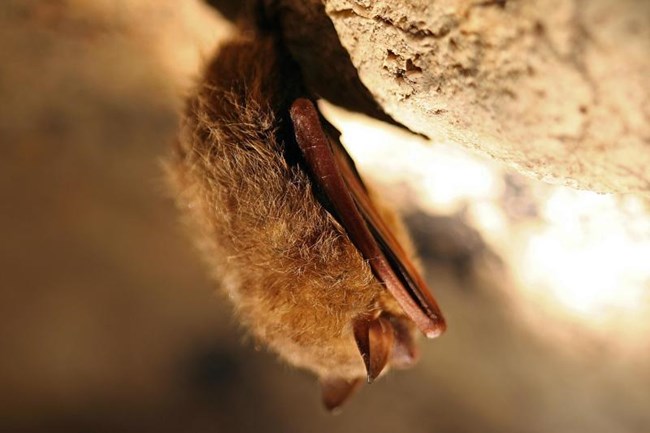
NPS Photo/ CUGA Bats are the only mammals capable of true flight and they make up an incredible diversity of species around the world, totaling over 1,400 individual species. A total of 13 species of bats are confirmed to live in the park. Not all the bat species found in the park use caves as one might expect. Only eight or nine species use the cave during times of maternity or during the long winter hibernation season. The other bat species utilize trees and structures such as bridges and buildings across the park and rarely go into caves. 
NPS Photo/ Molly Schroer Threatened and EndangeredThree of the bat species living in the park are listed as either threatened or endangered on the Federal Endangered Species List. These species include the Indiana bat (endangered), gray bat (endangered) and the northern long-eared bat (threatened). White-nose SyndromeWhite-nose syndrome (WNS) is a fungal disease killing bats in North America. Research indicates that the WNS causing fungus, Pseudogymnoascus destructans, is likely exotic, introduced from Europe. WNS was first detected at Mammoth Cave in 2012 and the park implemented strict WNS protocol for all people entering the cave to try to slow down the spread of this fatal disease. Due to the presence of this disease, some bat species have seen population declines and mortality rates over 90% and scientists predict some regional extinction of bat species will occur. How Scientists Study BatsBat SurveysBats of Mammoth Cave National ParkConfirmed bat species in the park
Unconfirmed bat species in the park
Learn MoreBats in National Parks |
Last updated: November 18, 2021
